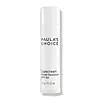What's inside
What's inside
 Key Ingredients
Key Ingredients

 Benefits
Benefits

 Concerns
Concerns

 Ingredients Side-by-side
Ingredients Side-by-side

Hydrogenated Olive Oil
Skin ConditioningPolyglyceryl-3 Diisostearate
EmulsifyingBeeswax
Emulsion StabilisingOzokerite
Emulsion StabilisingHomosalate
Skin ConditioningEthylhexyl Salicylate
UV AbsorberPolyethylene
AbrasiveButyl Methoxydibenzoylmethane
UV AbsorberMicrocrystalline Wax
Emulsion StabilisingOctocrylene
UV AbsorberTheobroma Cacao Seed Butter
EmollientSilica
AbrasiveTocopheryl Acetate
AntioxidantButyrospermum Parkii Butter Unsaponifiables
Skin ConditioningOlea Europaea Fruit Oil
MaskingTocopherol
AntioxidantHydrogenated Vegetable Glycerides Citrate
EmollientCopernicia Cerifera Wax
Water
Skin ConditioningPhenoxyethanol
PreservativeHydrogenated Olive Oil, Polyglyceryl-3 Diisostearate, Beeswax, Ozokerite, Homosalate, Ethylhexyl Salicylate, Polyethylene, Butyl Methoxydibenzoylmethane, Microcrystalline Wax, Octocrylene, Theobroma Cacao Seed Butter, Silica, Tocopheryl Acetate, Butyrospermum Parkii Butter Unsaponifiables, Olea Europaea Fruit Oil, Tocopherol, Hydrogenated Vegetable Glycerides Citrate, Copernicia Cerifera Wax, Water, Phenoxyethanol
Polyisobutene
Caprylic/Capric Triglyceride
MaskingParaffinum Liquidum
EmollientSilica Dimethyl Silylate
EmollientDiisopropyl Adipate
EmollientSqualane
EmollientBis-Ethylhexyloxyphenol Methoxyphenyl Triazine
Skin ConditioningButyl Methoxydibenzoylmethane
UV AbsorberEthylhexyl Salicylate
UV AbsorberEthylhexyl Triazone
UV AbsorberOctyldodecanol
EmollientDiethylamino Hydroxybenzoyl Hexyl Benzoate
UV FilterOctocrylene
UV AbsorberButyrospermum Parkii Butter
Skin ConditioningDicaprylyl Carbonate
EmollientGlyceryl Dibehenate
EmollientSynthetic Beeswax
Emulsion StabilisingTribehenin
EmollientGlyceryl Behenate
EmollientBisabolol
MaskingCaprylyl Glycol
EmollientStearalkonium Hectorite
Gel FormingTocopherol
AntioxidantEthylhexyl Palmitate
EmollientPropylene Carbonate
SolventHydrogenated Polydecene
EmollientButylene Glycol
HumectantPentylene Glycol
Skin ConditioningDunaliella Salina Extract
Skin ConditioningSodium Hyaluronate
HumectantPolyisobutene, Caprylic/Capric Triglyceride, Paraffinum Liquidum, Silica Dimethyl Silylate, Diisopropyl Adipate, Squalane, Bis-Ethylhexyloxyphenol Methoxyphenyl Triazine, Butyl Methoxydibenzoylmethane, Ethylhexyl Salicylate, Ethylhexyl Triazone, Octyldodecanol, Diethylamino Hydroxybenzoyl Hexyl Benzoate, Octocrylene, Butyrospermum Parkii Butter, Dicaprylyl Carbonate, Glyceryl Dibehenate, Synthetic Beeswax, Tribehenin, Glyceryl Behenate, Bisabolol, Caprylyl Glycol, Stearalkonium Hectorite, Tocopherol, Ethylhexyl Palmitate, Propylene Carbonate, Hydrogenated Polydecene, Butylene Glycol, Pentylene Glycol, Dunaliella Salina Extract, Sodium Hyaluronate
 Reviews
Reviews

Ingredients Explained
These ingredients are found in both products.
Ingredients higher up in an ingredient list are typically present in a larger amount.
Also known as Avobenzone, this ingredient is a chemical sunscreen filter that provides protection in the UV-A range.
Avobenzone is globally approved and is the most commonly used UV-A filter in the world.
Studies have found that avobenzone becomes ineffective when exposed to UV light (it is not photostable; meaning that it breaks down in sunlight). Because of this, formulations that include avobenzone will usually contain stabilizers such as octocrylene.
However, some modern formulations (looking at you, EU!) are able to stabilize avobenzone by coating the molecules.
Avobenzone does not protect against the UV-B range, so it's important to check that the sunscreen you're using contains other UV filters that do!
The highest concentration of avobenzone permitted is 3% in the US, and 5% in the EU.
Learn more about Butyl MethoxydibenzoylmethaneEthylhexyl Salicylate is an organic compound used to block UV rays. It primarily absorbs UVB rays but offers a small amount of UVA protection as well.
Commonly found in sunscreens, Ethylhexyl Salicylate is created from salicylic acid and 2-ethylhexanol. You might know salicylic acid as the effective acne fighter ingredient and BHA.
The ethylhexanol in this ingredient is a fatty alcohol and helps hydrate your skin, similar to oils. It is an emollient, which means it traps moisture into the skin.
According to manufacturers, Ethylhexyl Salicylate absorbs UV wavelength of 295-315 nm, with a peak absorption at 307-310 nm. UVA rays are linked to long term skin damage, such as hyperpigmentation. UVB rays emit more energy and are capable of damaging our DNA. UVB rays cause sunburn.
Learn more about Ethylhexyl SalicylateOctocrylene protects skin from sun damage. It absorbs UV-B with peak absorption of 304 nm. It is a common sunscreen ingredient and often paired with avobenzone, a UVA filter. This is because octocrylene stabilizes other sunscreen ingredients by protecting them from degradation when exposed to sunlight. Octocrylene is a photostable ingredient and loses about 10% of SPF in 95 minutes.
Octocrylene also acts as an emollient, meaning it helps skin retain moisture and softens skin. It is oil-soluble and hydrophobic, enhancing water-resistant properties in a product.
Those who are using ketoprofen, a topical anti-inflammatory drug, may experience an allergic reaction when using octocrylene. It is best to speak with a healthcare professional about using sunscreens with octocrylene.
The EU allows a maximum of these concentrations:
Learn more about OctocryleneTocopherol (also known as Vitamin E) is a common antioxidant used to help protect the skin from free-radicals and strengthen the skin barrier. It's also fat soluble - this means our skin is great at absorbing it.
Vitamin E also helps keep your natural skin lipids healthy. Your lipid skin barrier naturally consists of lipids, ceramides, and fatty acids. Vitamin E offers extra protection for your skin’s lipid barrier, keeping your skin healthy and nourished.
Another benefit is a bit of UV protection. Vitamin E helps reduce the damage caused by UVB rays. (It should not replace your sunscreen). Combining it with Vitamin C can decrease sunburned cells and hyperpigmentation after UV exposure.
You might have noticed Vitamin E + C often paired together. This is because it is great at stabilizing Vitamin C. Using the two together helps increase the effectiveness of both ingredients.
There are often claims that Vitamin E can reduce/prevent scarring, but these claims haven't been confirmed by scientific research.
Learn more about Tocopherol